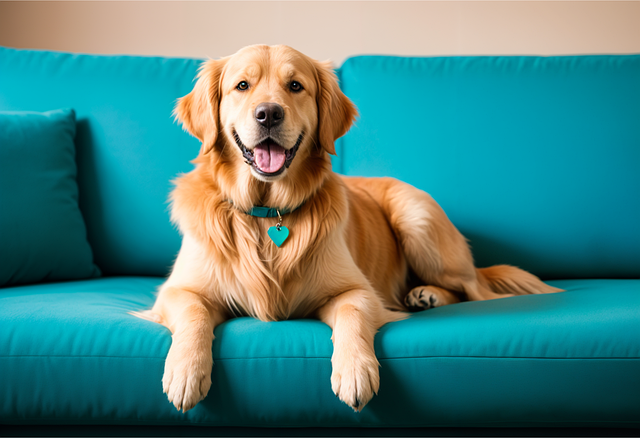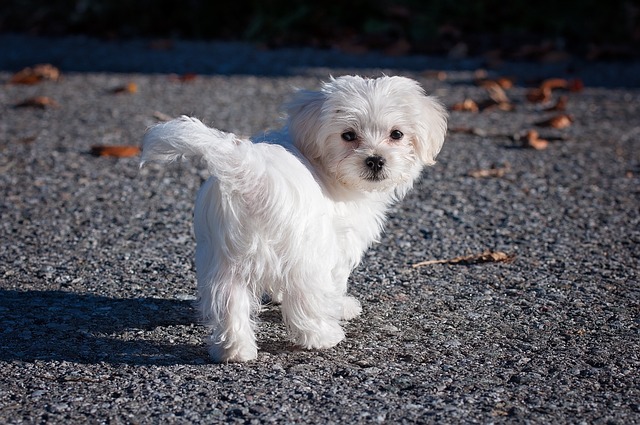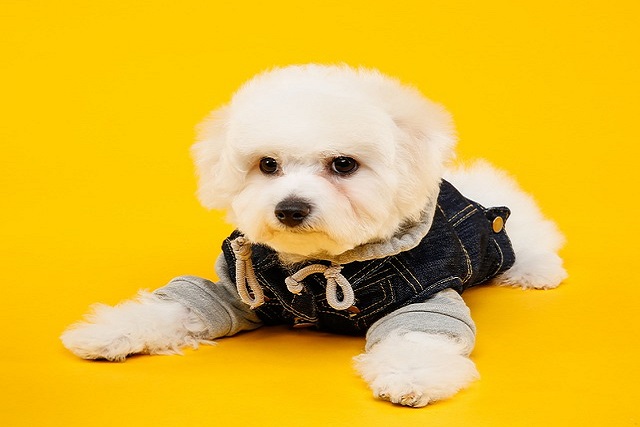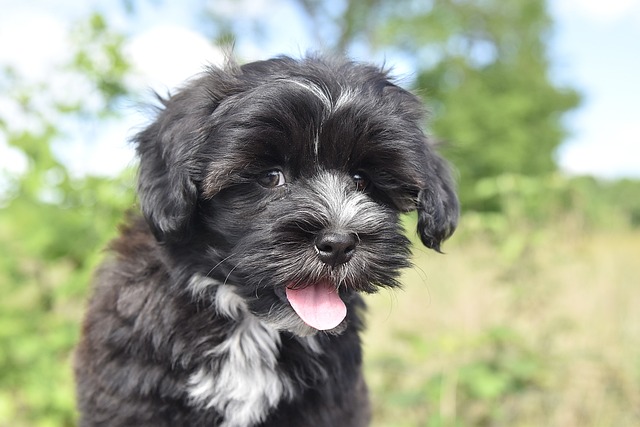
what to do if my dog's skin is peeling
If you’ve ever brushed your hand along your dog’s back and noticed small, paper-thin flakes of skin coming loose—or found little bits stuck to their favorite blanket
During the years we spend with our pets, dogs bring us endless joy and warmth. However, time is relentless. When they enter their old age, their physical functions gradually decline, and the problem of weak hind legs often plagues them. Watching our once lively and energetic companions now move slowly, with each step appearing arduous, our hearts are filled with distress. But as dog owners who love our pets, we are not helpless. Through scientific and reasonable methods, we can help strengthen the hind legs of senior dogs and enable them to still maintain a certain level of vitality in their later years.
The reasons for the problems with the hind legs of senior dogs are relatively complex. As they age, the articular cartilage gradually wears down, and bone loss accelerates, which weakens the buffering and supporting functions of the joints. It's like a machine that has been used for many years, with its parts starting to age and not running smoothly anymore. Arthritis is a common condition in senior dogs. Inflammation can cause joint pain and swelling, seriously affecting the normal movement of the hind legs. In addition, muscle atrophy is also an important factor. The decrease in exercise and changes in the body's metabolism lead to a gradual reduction in the muscle mass of the hind legs of senior dogs. With insufficient muscle strength, it is difficult for them to support the weight of their bodies.
To strengthen the hind legs of senior dogs, dietary adjustment is crucial. Providing senior dogs with foods rich in high-quality protein is like injecting repair energy into their bodies. Protein is an important component of muscles and can help maintain and enhance the muscles of the hind legs. Foods such as chicken, fish, and eggs are all excellent sources of protein. At the same time, it is necessary to ensure that the food contains abundant calcium and phosphorus. These two minerals are essential for bone health. However, it should be noted that the calcium-phosphorus ratio should be appropriate; otherwise, it will affect absorption. Some professional senior dog foods are scientifically formulated to meet these nutritional needs and are a good choice. In addition, adding foods rich in Omega-3 fatty acids, such as fish oil, can reduce joint inflammation and improve joint flexibility. Omega-3 fatty acids have powerful anti-inflammatory properties and can relieve the discomfort caused by arthritis in senior dogs, making it easier for them to move.
 Moderate exercise plays an irreplaceable role in strengthening the hind legs of senior dogs. But this exercise is not high-intensity running or jumping but gentle and targeted. Walking is one of the most suitable forms of exercise for senior dogs. Take them for a slow walk on a flat and soft surface every day, and the time can be gradually increased according to the dog's physical strength. During the walk, the muscles of the dog's hind legs are exercised, and the joints can also be moved to a certain extent, which helps to maintain joint flexibility. Swimming is also an excellent form of exercise. The buoyancy of water can reduce the pressure on the dog's hind legs from its body, and at the same time, it allows the hind legs to move fully, exercising muscle strength. If possible, take senior dogs to a pet-specific swimming pool for swimming or assist them in swimming in a shallow water area. In addition, some simple low-intensity training, such as letting the dog stand on a balance board for a moment, can also effectively exercise the balance ability and muscle control ability of the hind legs. But during the exercise process, always pay attention to the dog's condition. Once signs of fatigue or discomfort appear, stop immediately.
Moderate exercise plays an irreplaceable role in strengthening the hind legs of senior dogs. But this exercise is not high-intensity running or jumping but gentle and targeted. Walking is one of the most suitable forms of exercise for senior dogs. Take them for a slow walk on a flat and soft surface every day, and the time can be gradually increased according to the dog's physical strength. During the walk, the muscles of the dog's hind legs are exercised, and the joints can also be moved to a certain extent, which helps to maintain joint flexibility. Swimming is also an excellent form of exercise. The buoyancy of water can reduce the pressure on the dog's hind legs from its body, and at the same time, it allows the hind legs to move fully, exercising muscle strength. If possible, take senior dogs to a pet-specific swimming pool for swimming or assist them in swimming in a shallow water area. In addition, some simple low-intensity training, such as letting the dog stand on a balance board for a moment, can also effectively exercise the balance ability and muscle control ability of the hind legs. But during the exercise process, always pay attention to the dog's condition. Once signs of fatigue or discomfort appear, stop immediately.
In addition to diet and exercise, assistive tools can also provide additional support for the hind legs of senior dogs. A dog wheelchair can help senior dogs with weak hind legs regain their mobility. When the dog's hind legs cannot bear the weight of its body, the wheelchair can share the pressure, allowing them to move freely. A suitable dog bed and mattress are also very important. Choosing a soft dog bed and mattress with sufficient support can enable senior dogs to relax their hind leg joints well while resting and reduce the damage to the joints caused by pressure. In addition, ramps or steps can be installed at some key positions in the house, such as beside the stairs and the bed, to facilitate senior dogs to go up and down and avoid them from increasing the burden on their hind legs due to forced jumping.
Regularly taking senior dogs to see a veterinarian is a link that cannot be ignored. A veterinarian can accurately determine the severity of the dog's hind leg problems through professional examinations and provide targeted treatment plans. Some medications may be prescribed, such as joint protectants and anti-inflammatory drugs, to help relieve pain and improve joint function. At the same time, the veterinarian can also provide personalized dietary and exercise suggestions according to the specific situation of the dog to ensure that the strengthening measures we take are scientific and effective.
During the process of strengthening the hind legs of senior dogs, our company and patience are equally important. Senior dogs may be in a low mood due to physical discomfort, and we should give them more love and encouragement. When they complete some difficult actions, such as standing up and walking a certain distance, give them rewards and praise in a timely manner so that they can feel that their efforts are recognized. Communicating gently with them and stroking their bodies, these seemingly simple actions can all give senior dogs great spiritual support.
Every senior dog is a precious member of our family. They accompany us throughout their lives. When they enter their old age and have physical problems, we have the responsibility to give them the best care. Through scientific dietary adjustment, moderate exercise, reasonable use of assistive tools, and professional veterinary care, we can help senior dogs strengthen their hind legs, relieve physical discomfort, and enable them to still feel the beauty of life and have a certain quality of life in the final stage of their lives.

If you’ve ever brushed your hand along your dog’s back and noticed small, paper-thin flakes of skin coming loose—or found little bits stuck to their favorite blanket

That frustrating moment when your dog won't stop scratching - is it just winter dryness or something more sinister like mites? While both conditions can make your pup miserable

If you’ve noticed your dog’s paws looking cracked, rough, or flaky—maybe they’re licking them more after walks, or you’ve felt the dryness when they rest a paw on your lap

If you’ve ever noticed your dog dragging their rear across the carpet or licking their tail area more than usual, they might be trying to tell you something about their anal glands.

Trying to figure out whether to clip or grind your dog’s nails can feel like a tough call, especially if you’re new to handling those wiggly paws.

That alarming moment when your dog blinks up at you with a thick, goopy mess crusting around their eye - it's natural to wonder why there's suddenly so much discharge.